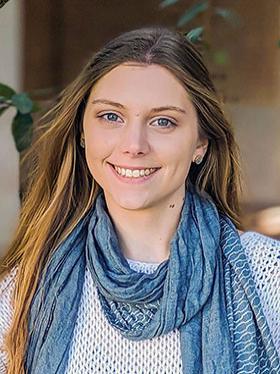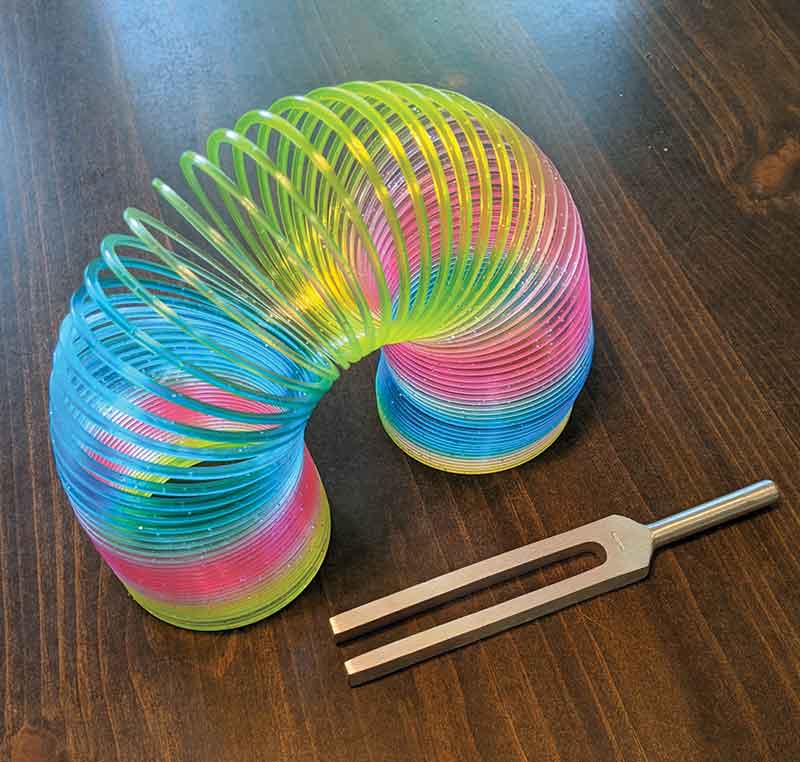Successful Outreach and the SPS SOCK
Winter
2021
SPS Chapters on Outreach
Successful Outreach and the SPS SOCK
Holly Fortener, 2020 SPS SOCK Intern
 What does sound look like?
What does sound look like?
So begins an activity on sound, waves, and oscilloscopes in the 2020 SPS Outreach Catalyst Kit (SOCK). Through engaging lesson plans and activities, the SOCK is designed for SPS chapters that are interested in hosting science outreach events but would like some extra help planning engaging activities and creating a fun, friendly environment. The kit includes all the materials you need and a manual, and it’s free to SPS chapters.
The 2020 SOCK includes a number of hands-on activities: viewing audio signals, listening to soundscapes, and tinkering with tuning forks. In my favorite activity, participants speak into a handheld microphone connected to a portable oscilloscope. They are actually able to see the sounds they make!
Like all of the other SOCK activities, the portable oscilloscope and microphone come with a handy guide that not only explains how to set up the demonstration but also the physical concepts, or key takeaways, paired with intriguing questions to drive educational conversations with different age groups.
Science outreach is not only a way for SPS members to educate others, but also to express their passion for physics and astronomy and promote growth in STEM fields.
Whether you use the SOCK or your own activities, keeping the following things in mind will go a long way to helping you host a successful outreach event.
Activities are executed in a safe way.
Will students be around lasers? Liquid nitrogen? Will you have an open flame? (Ask me about “Fire Fridays” in my high school chemistry class for a story about this!) Are the hosts—SPS members—practicing and modeling good safety? Considering these questions is essential.
Activities promote a fun and friendly environment.
Think about your own experience attending an outreach event or in science class. What is the best way to interact with people attending an outreach event? Choose hands-on activities that promote engagement, like those in the SOCK!
Activities convey key learning points in an audience-appropriate manner.
Are the activities age appropriate for your expected participants? Do they assume an appropriate level of subject knowledge? You can often do the same activity with different kinds of audiences if you adjust the language you use, difficulty level, and expected outcomes; the SOCK was designed to be flexible in this way. Adapting outreach activities for your specific audience may take time but is key to a successful event.

